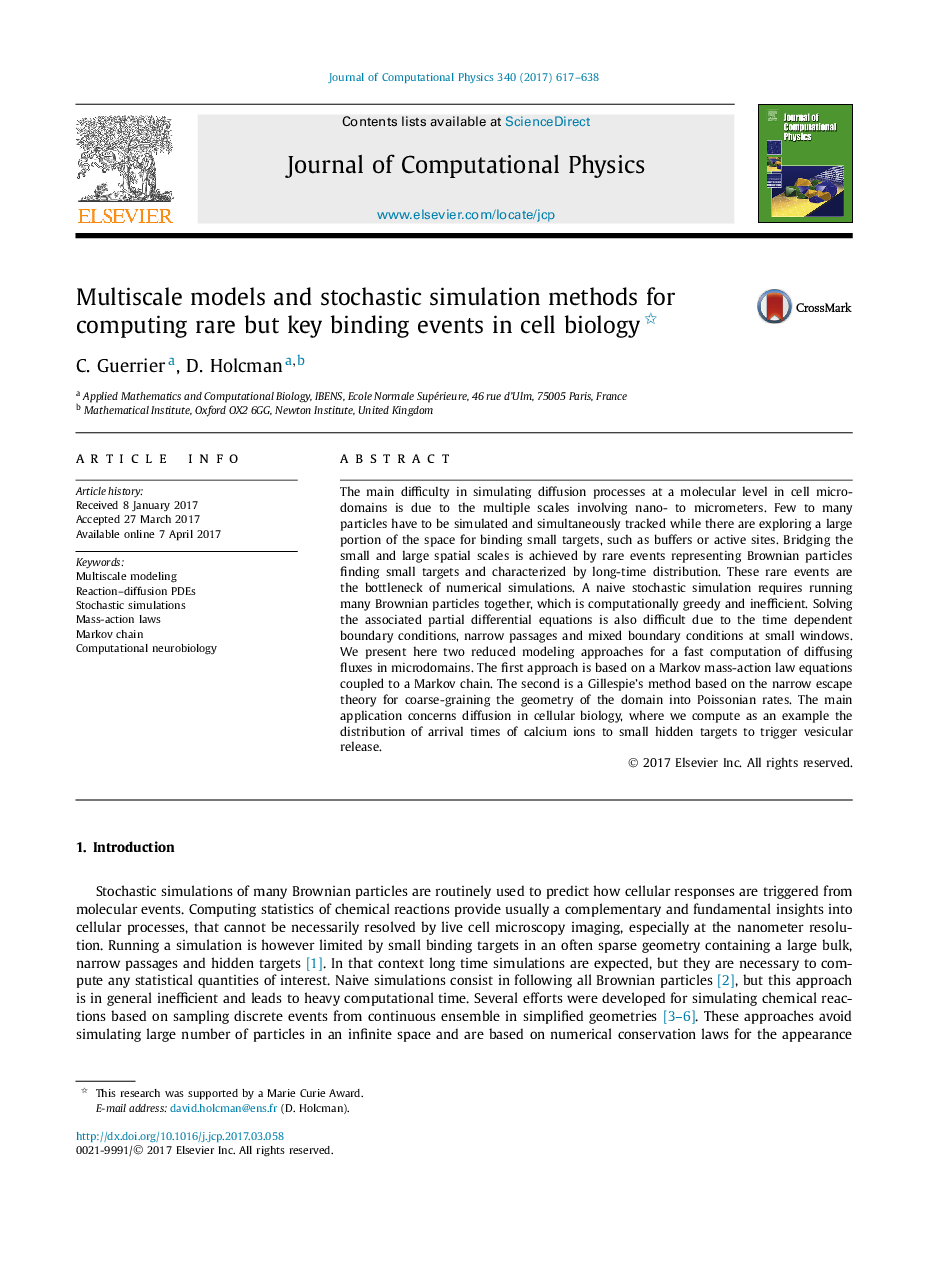| Article ID | Journal | Published Year | Pages | File Type |
|---|---|---|---|---|
| 4967307 | Journal of Computational Physics | 2017 | 22 Pages |
Abstract
The main difficulty in simulating diffusion processes at a molecular level in cell microdomains is due to the multiple scales involving nano- to micrometers. Few to many particles have to be simulated and simultaneously tracked while there are exploring a large portion of the space for binding small targets, such as buffers or active sites. Bridging the small and large spatial scales is achieved by rare events representing Brownian particles finding small targets and characterized by long-time distribution. These rare events are the bottleneck of numerical simulations. A naive stochastic simulation requires running many Brownian particles together, which is computationally greedy and inefficient. Solving the associated partial differential equations is also difficult due to the time dependent boundary conditions, narrow passages and mixed boundary conditions at small windows. We present here two reduced modeling approaches for a fast computation of diffusing fluxes in microdomains. The first approach is based on a Markov mass-action law equations coupled to a Markov chain. The second is a Gillespie's method based on the narrow escape theory for coarse-graining the geometry of the domain into Poissonian rates. The main application concerns diffusion in cellular biology, where we compute as an example the distribution of arrival times of calcium ions to small hidden targets to trigger vesicular release.
Related Topics
Physical Sciences and Engineering
Computer Science
Computer Science Applications
Authors
C. Guerrier, D. Holcman,
